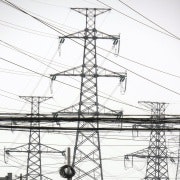Network writedowns: 'free lunch' should come with a health warning
The article Time to write down the value of NSW networks (October 17) makes the remarkable claim that ‘everyone can win' from a writedown of the value of NSW electricity network assets.
A close inspection of the supporting report by Bruce Mountain, of Carbon Energy Markets, suggests this claimed free lunch ought to come with a health warning.
The report proposes a writedown of $9 billion to NSW electricity network assets prior to the proposed lease transaction. It asserts that this massive writedown would make everyone better off – the current owners, future investors, and electricity consumers. That is, reducing the value of the asset prior to leasing it will result in everyone being better off. Such a counter-intuitive proposition calls for some explanation.
The claim is based on the logic that if network assets were written-down before the transaction it would lower any risk of a writedown for future investors, and they would consequently pay a premium to invest in the assets.
The first problem with this logic is that the maths simply doesn't work. For taxpayers to break even, the lease proceeds should achieve at least the same value as if the writedown had not occurred. Given the current regulatory asset value of NSW distribution networks is about $25 billion and comparable energy infrastructure transactions have achieved an average of around 1.4 times the regulated asset base in the past decade, this suggests a potential current market value of approximately $35 billion.
However, the size of writedown (40 per cent) suggested by Carbon Energy Markets would see the regulatory asset value reduced to around $15 billion – leaving a gap of around $20 billion to be made up before NSW taxpayers even break even from this proposal, let alone enjoy any benefits.*
To close this gap investors would need to pay a premium for security that is implausibly large. For the Carbon Energy Market proposal to stack up would
require investors to pay a multiple of over 2.3 times the regulatory value. As already noted, in the last 17 transactions the average has been around 1.4 times the regulatory value, and electricity network have not attracted valuations near these levels since the heady days of the first privatisations in Victoria around 20 years ago.
The second flaw in the proposal is that it assumes investors will think their capital is more secure after a writedown. Investors have relied on Australia's codified legal and regulatory framework to define how the regulatory asset value is determined. This security is already reflected in asset values and cost of finance for capital intensive, long-life infrastructure. It is difficult to credit that potential investors would observe a $9 billion act of regulatory stranding with no precedent in Australian infrastructure and conclude it is less likely to happen in the future. As a forecast of likely investor behaviour, it violates both economic logic and the ‘front bar' test. In reality, investors possess not just wallets, but memories, and so are much more likely to take history as proof of what can happen, rather than evidence that of what won't happen again.
The ENA's recent report Written Down Value? discussed a wide range of potential impacts from regulatory writedowns. Using conservative analysis which excluded any sovereign risk perceptions from investors, this study showed consumers would be worse off under asset writedown scenarios, paying up to $320 million more per year in network charges.
A final remarkable feature of the writedown proposal is its circularity.
It relies on taking $9 billion from NSW in the form of an asset writedown and giving it back to them as electricity consumers, all while hoping sophisticated financial investors pay above current market prices for assets on the way through.
What could possibly go wrong?
Garth Crawford is executive director of economic regulation at the Energy Networks Association and author of Written-Down Value? Assessing proposals for electricity network write-downs.
*Given the transaction structure has yet to be fully defined, this analysis is based on the full asset base; however, the conclusions apply equally in the proposed partial lease.
















